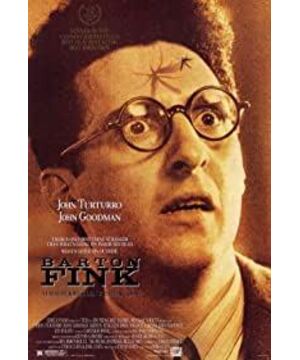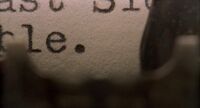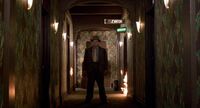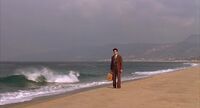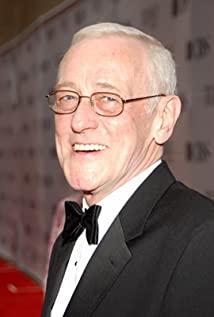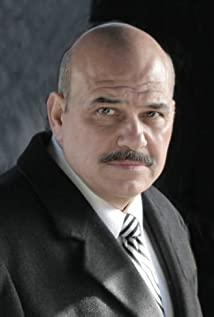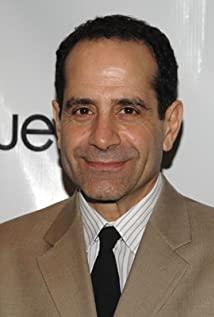With "Barton Fink", the Coen brothers were very successful at the Cannes Film Festival in 1991, winning the Palme d'Or for Best Picture, Best Director and Best Actor. This film can be called a representative work of "pretty hard to understand". The film tells the story of a New York playwright Patton who was invited by Hollywood because of his new play. As well as the conflict of the play concept, Barton is extremely struggling. In the process of pursuing inspiration, reality and dream are also entangled with each other.
1. The metaphor of the film - the ambiguity between reality and dream
A surreal film that depicts a world that is inherently illogical and instead focuses on the inner truth. Cohen's "Barton Funk" is also a further bold attempt. There is no transition between the two worlds of dream and reality in the film. This open-minded thinking has turned many fans out. In the film, the metaphors of the weird Hotel Il, portraits of beautiful women, mosquitoes, degummed wall coverings, boxes sent by Charlie are indeed worth scrutinizing, but if you grasp the context of Barton's creative inspiration and analyze it, it is easy to interpret.
1. Il Inn. The only thing in the film is the interior of the Il Hotel. The audience never knows what the hotel looks like, from the constant ringing of the doorbell, the elevator with the cable about to break, the tapestry falling from the wall, the creaking bed. , the laughter of neighbors, the sound of pipes, reflecting the rundown feeling of the hotel space. The tenants only heard their voices and did not see them, and the waiters and elevator operators were as cold and unpredictable as the living dead. All elements say that Il Inn is by no means a friendly and clean place. In fact, in the last scene where Barton entered the El Hotel when the waves crashed against the reef (it reappears later in the film), it can be understood that Barton's development in Hollywood will eventually fail, and the El Hotel is Hollywood's "nightmare", resulting in, Barton's exhaustion of inspiration.
2. Oil painting. When Patton first surveyed his room, Cohen used an extremely long shot of the oil painting on the wall. In the oil painting, a beautiful woman is looking at the sea with her back to the picture, while Patton is looking at the painting, and a very interesting composition appears on the camera. Both Patton and the woman have their backs to the audience, as if looking at the sea. This oil painting actually appeared in Barton's eyes at the end of the film. Barton also asked the woman in surprise, "Are you in the painting?" The woman said, "Don't be stupid." The sea appears many times in the film. The picture, in fact, represents a successful work or represents Hollywood. The woman is actually one of Barton's avatars, mixed with sexual desire and the urge to succeed in Hollywood. The woman looking at the sea is exactly what Barton must have created. Expectations of an excellent script.
3. Box. The box must contain Audrey's head. Although the box was not opened until the end of the film, it is not difficult to infer from the dead Audrey and the perverted murderer Charlie described by the police who likes to collect human heads. In fact, since Audrey's death, the tone of the film has changed from a comedy mixed with weirdness and no warning to a thriller. Since then, it has become a critical point. Most of the second half of the film is actually the world imagined in Barton's mind. In fact, Charlie has always been a character imagined due to the exhaustion of Wen Si. Charlie himself said, "I am the messenger of hell to wake you up". In the film, Charlie kept looking for inspiration for Patton. The box containing the head was given to Patton by Charlie. The gift, because Audrey, as a secretary, actually deeply understands the model of Hollywood script, Audrey's head is actually "the part that represents the whole", although it leaves the body but still "functions", the box is exactly what Charlie wanted to make Patton Finding a tool for inspiration, Barton keeps holding the box until the end of the film. This surreal mystical, darkly humorous approach is a pure treat for the audience.
2. Patton—a thinker surrounded by his own imagination
In fact, many people and scenes were imagined by Patton due to exhaustion of inspiration. The deep understanding of Patton mainly focuses on the understanding of the second protagonist of the film, Charlie, that is, the murderer Monte.
1. Button and Charlie are "the same person".
Charlie is the figure that comes to Patton's mind when he's exhausted, looking for inspiration for him. These two people, one fat and one thin, with opposite personalities, are actually the same body. This is similar to the character settings of Dutton and Jack in Fight Club. Charlie doesn't actually exist at all, just a figure in Patton's subconscious, which can be found in the details in the film. When Patton stared at the painting without inspiration, he heard the strange laughter next door, which led to the first appearance of Charlie. Although there are some minor festivals, Charlie, who looks fierce and fierce, is very friendly. Two people who look completely different begin to talk. Although Barton keeps interrupting Charlie's words (I have a story to tell), Charlie is still very friendly. , this is also the only trace of warmth that Barton found in this strange Il Hotel, so that when Charlie was going on a business trip later, Barton also cried bitterly, indicating the implicit intimacy between the two. Charlie's purpose of appearing when Patton's ideas are exhausted is to find inspiration for Patton and to "tell a story" to Patton. Patton often had ear pus, and it was like mucus oozing from the walls in Patton's room, which had ears. This can't help but think that Barton is in Charlie's body, which is not difficult to explain the interior of the Il Hotel's arterial-like corridors, the damp plumbing system (excretion system), the sound of the stomach squirming from the elevator, which is actually a pot belly. , the inside of the sweaty Charlie. Charlie is Patton's alter ego. While Charlie was teaching Button to wrestle, when Charlie got on all fours and invited Button to wrestle with him he kept saying "Come on... come on... show lurking same-sex love. A cop saw a picture of the wrestling When asked Patton "Are you sex partners?" Patton replied "Sex? It's a man, we're just wrestling!" This undoubtedly expresses the closeness of the two, and Charlie taught Patton to wrestle to help Patton conceive the script about wrestling , in order for him to find inspiration, the same is true for the box sent to Patton later.
2. "Mad Monte" (Charlie), the messenger of hell accompanied by "fire" and "wind".
Munch's most famous oil painting is The Scream. The character in "The Scream" is actually a kind of spiritual body floating in the wind, with an "O" shape with its mouth wide open, giving it an aura of death. The pronunciation of "Madman Monte" in "Barton Fink" is the same as that of the painter Munch, and most importantly, the symbolism of Madman Monte is similar to the spirit to be expressed in Munch's paintings, so it is not excluded that the Coen brothers moved "The Scream". The possibility of appearing on the screen has transformed its original intention and retained its fantastic features and inspiration. Madman Munch is a serial killer, and in the scene of killing the police, Charlie's image is vividly expressed. Every appearance of Charlie is accompanied by strong winds, and finally roars to attack two policemen. He is a messenger of hell, elevator , the corridors, the entire hotel was overrun by fire, and the whole scene was supernatural. Such a surreal scene of killing a policeman is actually the content of Patton's script. When Charlie kills the second policeman, the camera mainly shows Patton's psychological reaction, as if Patton is responsible for all the terrible events that happened. . As in the movie, on-camera - a gust of wind blowing up and messing with Patton's script, it's full of metaphors. In fact, Patton is the protagonist of this story! Patton is a thinker surrounded by imagination.
3. The mockery of black humor -- the constant style of the Coen brothers
Dark humor and sarcasm are the basic characteristics of the Coen brothers' film style, and the tone of all their work. However, its mockery is not as unscrupulous as "A Clockwork Orange", and the black plot is not as bloody as Quentin's. Each of Cohen's films has an unusual humor, not only light coloring, but also lingering aftertaste. A sense of humor, which may have contributed to its success in Europe. The combination of sarcasm and film noir begins to stylize here with the Coen brothers and is on full display in Button Funk.
1. Self-deprecating self-deprecating inspiration.
"Barton Fink" is unique among the Coen brothers' films, the screenplay was conceived in only three weeks, and the script was written mainly because their script "Miller's Crossing" was stuck, This is undoubtedly a mockery of the Coen brothers for their own exhaustion of inspiration. In fact, Cohen and Funk have many similarities. First of all, in terms of appearance, Turturro's role as Patton with big glasses is very similar to Cohen himself. Secondly, Cohen and Fink are very similar in character and way of understanding the world. At the end of the film's opening play, the audience shouts out the inexplicable, anxious look on Button's face as the writer appears, and we saw a similar look when the Coen brothers received their Button Funk awards at the Cannes Film Festival. "Barton Fink" is certainly a self-deprecating anthem, and Cohen makes fun of every scene, every person in the film, and himself. The most typical example is when Barton was slow to write the script at the Il Hotel, and there were several muffled laughter next door. This laughter should have been from Charlie on the surface, but from the ambiguity of the movie itself, Charlie was also imagined by Barton. character, which is actually mocking Patton's laughter, just as Cohen mocks himself for being in trouble for being uninspired.
2. Self-deprecation of Jewish nationality.
Some of the characters in the Coen brothers' work represent a Jewish identity, and these characters are their self-deprecating spokespersons (because they are Jews themselves). Judaism's opinions playfully express the various ugliness of the Jewish people and exaggerate to an extent that is difficult to add. This approach can also be found in the Jewish Woody Allen films, this hateful perspective, which dramatizes his Jewish identity through great distortions and anomalies. For example, Bernie, who is laughably ugly, in "Miller's Crossing", and Ripnick, the president of Hollywood, in "Barton Funk". Ripnick is definitely the Coen brothers exaggerating their already exaggerated Jewish image to a comical effect, not only in hilarious language but also in hilarious behavior. When Patton came for the first time, Ripnick showed a very happy look and talked at length. At the same time, he is also very arrogant, saying that he is "the most bastard, the most greedy, and the most vicious among the Jews!", but such a arrogant person finally kneels down to a playwright whom he despises, and kissed his feet. This eccentric, arrogant, disgraced figure is the epitome of Cohen's self-deprecating Jewishness. Of course, Cohen's ultimate goal is not to satirize Jews, but through this abnormality and exaggeration, he replaces those stereotyped Jewish characteristics in a roundabout way, and uses a confusing perspective to achieve true satire, to those who are anti-Semitic. The activists fought back with the greatest possible effect. In the section where the hotel is set on fire, Charlie handsomely says "Go to hell, Hitler!" before killing the second cop, which gives the real reason for Cohen's self-deprecating Jewishness.
3. A mockery of the film industry.
The story in the film takes place in 1941, just in time for the recovery of the American film industry after the Great Depression. At this time, in order to encourage the development of the film industry, some new rules were established, and two or three films could win awards. Faced with such rules, many film companies have established B-type divisions to manufacture low-investment, high-efficiency stereotyped films. The film company to which Patton belongs is exactly like this. No matter how Ripnick denies it, in fact his company mainly makes B-movies. When discussing wrestling movies with Patton, he proposed this routine to Patton, and we can get confirmation from Audrey's mouth that the outline of a B-type film can actually be repeated infinitely. In the film, the screenwriter's work is regarded as a mechanized rewriting, which is only an insignificant chain in the film industry chain. And this is not in line with the artistic style in Patton's mind. Patton was thinking hard for inspiration and finally found that the B-movie is a kind of irrationality at all. The wrestler shouts "I'm going to destroy you" as he pounces on his opponent, and the director asks the actor to show it differently, but it doesn't feel right no matter what. Stupid lines, mediocre acting, and a terrible script are hilarious, because they don't improve the quality of the movie at all, they just add another bad movie.
The article is reproduced from the surreal dream of absurdity, Wang Xiao, Wu Di, radio and film commentary, invaded and deleted
View more about Barton Fink reviews


